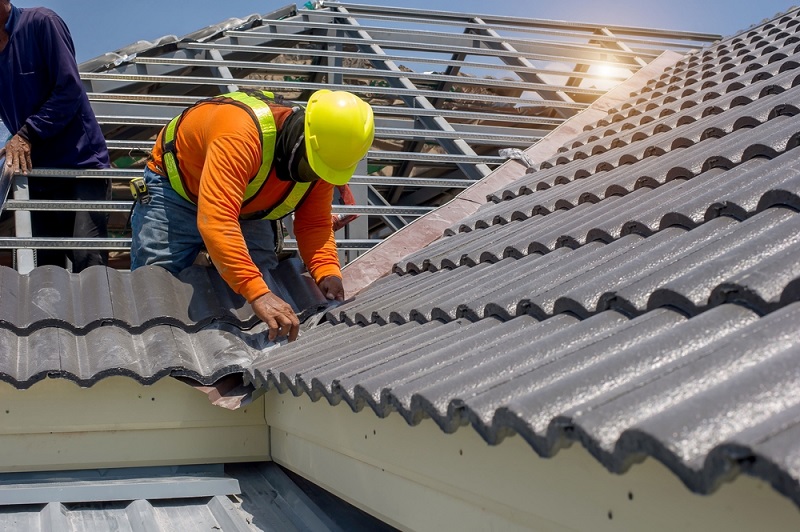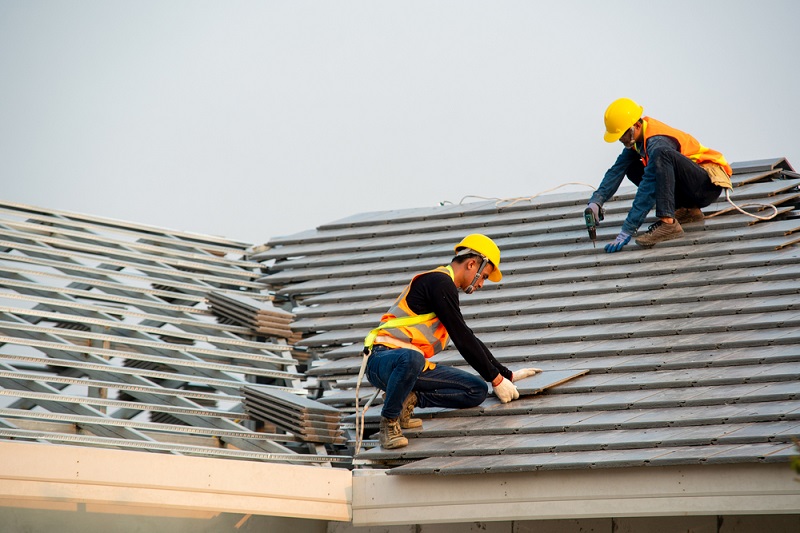A well-maintained roof is essential for protecting your home from the elements and ensuring a comfortable living environment. However, over time, your roof may start to show signs of wear and tear, such as leaks, cracks, or missing shingles. When this happens, it's time to consider roof restoration.
Explore The Benefits Of Roof Restoration, The Process Involved, And Some Essential Tips For Getting The Best Results.
1. What is Roof Restoration?
Roof restoration is the process of repairing, cleaning, and rejuvenating your roof to prolong its lifespan and improve its overall appearance. This process typically involves repairing any damage, replacing broken or missing shingles, and applying a protective coating to seal and protect the roof from future damage. Roof restoration is an excellent alternative to a complete roof replacement, as it is more cost-effective and less disruptive to your daily life.
2. Benefits of Roof Restoration
There are several benefits to restoring your roof, including:
- Increased roof lifespan: A well-maintained roof can last for decades, but without proper care, its lifespan can be significantly reduced. Roof restoration can help extend the life of your roof by addressing any issues and protecting it from further damage.
- Improved energy efficiency: A damaged or poorly insulated roof can lead to higher energy bills due to increased heat loss. Restoring your roof can help improve its insulation, reducing your energy consumption and lowering your bills.
- Enhanced curb appeal: A worn or damaged roof can negatively impact the appearance of your home. Roof restoration can help restore its beauty and increase your property's overall value.
- Cost savings: Roof restoration is typically less expensive than a full roof replacement, saving you money in the long run.
- Environmental benefits: By restoring your roof instead of replacing it, you can reduce waste and the demand for new roofing materials, making it a more environmentally friendly option.
3. Signs You Need Roof Restoration
Some common signs that your roof may need restoration include:
- Roof leaks or water damage inside your home
- Missing, cracked, or curling shingles
- Sagging or uneven rooflines
- Mold, mildew, or moss growth on your roof
- Damaged or rusted flashing
- Granule loss on asphalt shingles
- Visible wear and tear, such as faded or peeling paint
If you notice any of these issues, it's essential to address them promptly to prevent further damage and costly repairs.
4. The Roof Restoration Process
The roof restoration process typically involves the following steps:
1. Roof inspection: A thorough inspection of your roof is necessary to identify any damage and determine the best course of action for restoration.
2. Repair and replacement: Any damaged or missing shingles, flashing, or other roofing materials will be repaired or replaced as needed.
3. Cleaning: Your roof will be cleaned to remove dirt, debris, and any mold, mildew, or moss growth.
4. Protective coating: A protective coating, such as a sealant or paint, will be applied to your roof to help prevent future damage and prolong its lifespan.
5. Final inspection: A final inspection will be conducted to ensure all work has been completed correctly and your roof is in good condition.
5. Choosing the Right Roofing Materials
When restoring your roof, it's essential to choose high-quality, durable roofing materials that will provide long-lasting protection for your home. Some popular roofing materials include:
- Asphalt shingles: Affordable, easy to install, and available in various colors and styles, asphalt shingles are a popular choice for many homeowners.
- Metal roofing: Durable, lightweight, and energy-efficient, metal roofing is an excellent option for those looking for a long-lasting roofing material.
- Tile roofing: With their classic appearance and durability, clay or concrete tiles are a popular choice for homes in warmer climates.
- Wood shingles or shakes: Offering a natural, rustic look, wood shingles or shakes can be a beautiful option for your roof restoration. However, they do require more maintenance than other materials.
6. Tips for a Successful Roof Restoration
To ensure a successful roof restoration, follow these tips:
- Hire a reputable roofing contractor with experience in roof restoration.
- Choose high-quality, durable roofing materials that are suitable for your climate and home's style.
- Address any underlying issues, such as poor insulation or ventilation, that may be contributing to your roof's deterioration.
- Keep up with regular roof maintenance and inspections to prevent future damage and prolong your roof's lifespan.
7. Hiring a Roofing Contractor
When hiring a roofing contractor for your roof restoration, it's essential to do your research and select a reputable, experienced professional. Look for a contractor with positive reviews, a valid license and insurance, and a portfolio of successful roof restoration projects. Be sure to get multiple quotes and ask for references to ensure you're making the best choice for your home.
8. Roof Maintenance and Inspection
Regular roof maintenance and inspections are crucial for prolonging your roof's lifespan and preventing costly repairs. Some essential maintenance tasks include:
- Cleaning gutters and downspouts to prevent water damage
- Removing debris, such as leaves and branches, from your roof
- Inspecting your roof for damage, such as missing or cracked shingles, after severe weather events
- Addressing any issues promptly to prevent further damage
Conclusion
Roof restoration is an excellent option for homeowners looking to prolong their roof's lifespan, improve energy efficiency, and enhance their home's curb appeal. By understanding the benefits, process, and tips for a successful roof restoration, you can make an informed decision about whether this option is right for your home. Remember to hire a reputable roofing contractor, choose high-quality materials, and keep up with regular maintenance and inspections to ensure your roof remains in top condition for years to come.








No comments:
Post a Comment